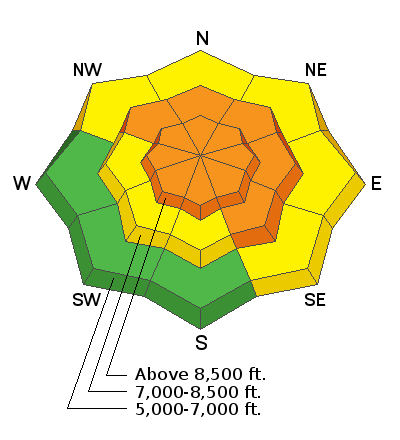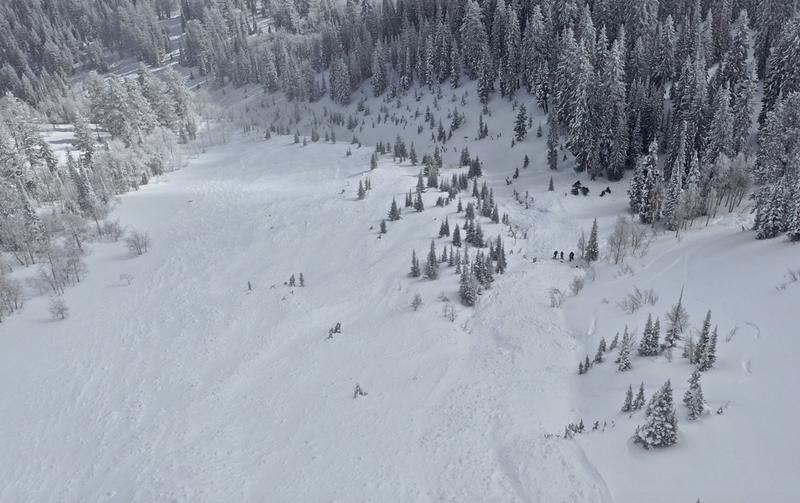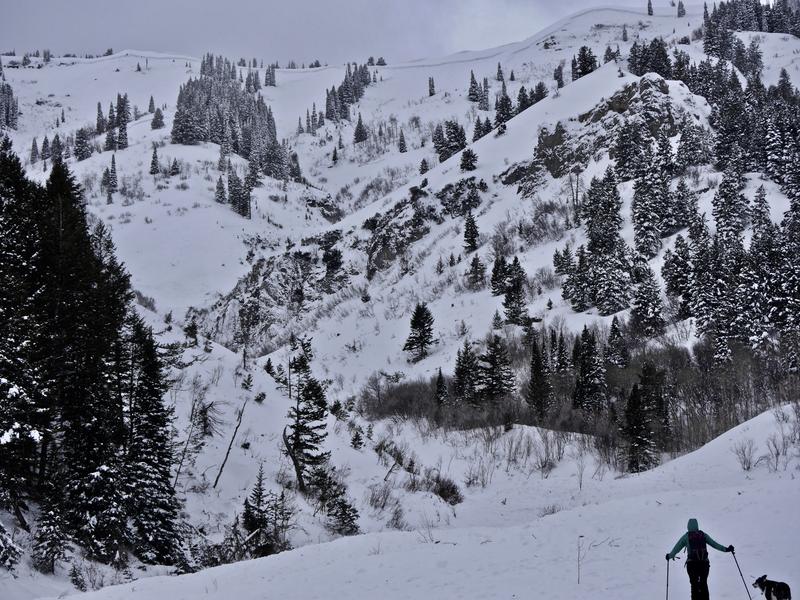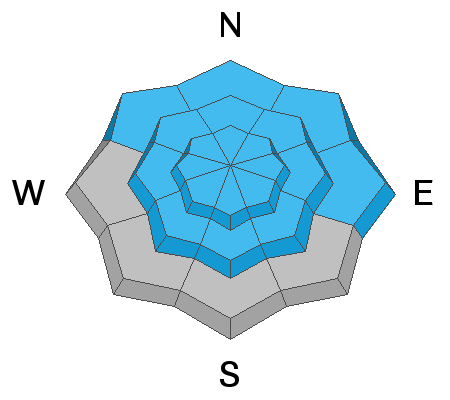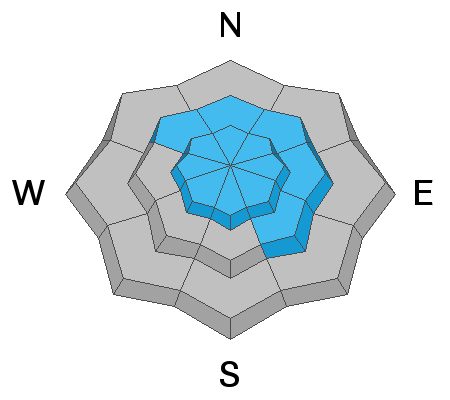We are very sad to report that on 2-20-2021, a 48-year-old Preston man was killed in an avalanche on the east side of Sherman Peak west of Georgetown Idaho. Our preliminary accident report is
HERE.
Moderate snowfall is visible on the Beaver Mountain Webcams this morning and a few inches of light snow fell in the mountains overnight. There is a four inches of new snow with 0.3" SWE in the last 24 hours at the 8400' Tony Grove Snotel. It's 14°F, 13° cooler than yesterday morning, and there is 76 inches of total snow and 83% of normal SWE. Westerly winds moderated since yesterday, but are still blowing and drifting snow this morning at upper elevations. Winds from the west-northwest are blowing 15 to 20 mph at the CSI Logan Peak weather station. There has been a good deal of drifting at upper elevations from mostly west winds in the past several days. On many steep slopes, the drifting has added weight and stiffness to the existing slab that is capping widespread weak sugary snow. Some slopes now hang in a precarious balanced state, only needing a person ride by to trigger a dangerous avalanche.
We're expecting a cold and snowy day in the mountains, but not much in the way of accumulation. Temperatures at 8500' will top out at around 12°F, and moderate north winds will create wind chill values as low as -4°F. Cold temperatures will persist tomorrow, with increasing clouds. Snow is likely Thursday night and Friday, with 4 to 7 inches possible. Cold and unsettled weather will continue through the weekend and into next week.
On Saturday 2-20-2021 a party of riders remotely triggered a very large avalanche near Gibson Lakes in Franklin Basin, a few miles north of the Idaho state line. The large group of riders were down in the flats, and well out from under any steep terrain when they heard a very loud "sonic boom" audible collapse, and the whole hill came down... clouds obscured the crown, but the debris field was quite broad.
A significant natural cycle occurred across the Logan Zone early last week, with many huge avalanches observed. Very large natural avalanches failing on a buried sugary persistent weak layer and running well out into lower elevation runout zones were widespread and occurred on slopes facing every direction. Reports of extensive natural avalanches include most avalanche paths in the Wellsville Mountain and Mount Naomi Wildernesses, in Upper Spring Hollow, and Wood Camp Hollow. Big avalanches were also reported near Tony Grove Lake, Providence Canyon, Logan Dry Canyon, Cub River, Hillyard Canyon, and in the mountains west of Bear Lake.
A few natural avalanches also occurred over last weekend due to loading from blowing snow.
Large natural avalanches were widespread across the Logan Zone early last week.

